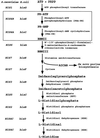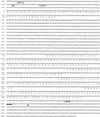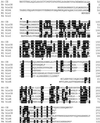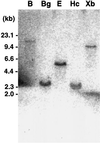Isolation and characterization of a histidine biosynthetic gene in Arabidopsis encoding a polypeptide with two separate domains for phosphoribosyl-ATP pyrophosphohydrolase and phosphoribosyl-AMP cyclohydrolase
- PMID: 9733547
- PMCID: PMC34866
- DOI: 10.1104/pp.118.1.275
Isolation and characterization of a histidine biosynthetic gene in Arabidopsis encoding a polypeptide with two separate domains for phosphoribosyl-ATP pyrophosphohydrolase and phosphoribosyl-AMP cyclohydrolase
Abstract
Phosphoribosyl-ATP pyrophosphohydrolase (PRA-PH) and phosphoribosyl-AMP cyclohydrolase (PRA-CH) are encoded by HIS4 in yeast and by hisIE in bacteria and catalyze the second and the third step, respectively, in the histidine biosynthetic pathway. By complementing a hisI mutation of Escherichia coli with an Arabidopsis cDNA library, we isolated an Arabidopsis cDNA (At-IE) that possesses these two enzyme activities. The At-IE cDNA encodes a bifunctional protein of 281 amino acids with a calculated molecular mass of 31,666 D. Genomic DNA-blot analysis with the At-IE cDNA as a probe revealed a single-copy gene in Arabidopsis, and RNA-blot analysis showed that the At-IE gene was expressed ubiquitously throughout development. Sequence comparison suggested that the At-IE protein has an N-terminal extension of about 50 amino acids with the properties of a chloroplast transit peptide. We demonstrated through heterologous expression studies in E. coli that the functional domains for the PRA-CH (hisI) and PRA-PH (hisE) resided in the N-terminal and the C-terminal halves, respectively, of the At-IE protein.
Figures








References
MeSH terms
Substances
Associated data
- Actions
- Actions
LinkOut - more resources
Full Text Sources
Molecular Biology Databases
Research Materials

